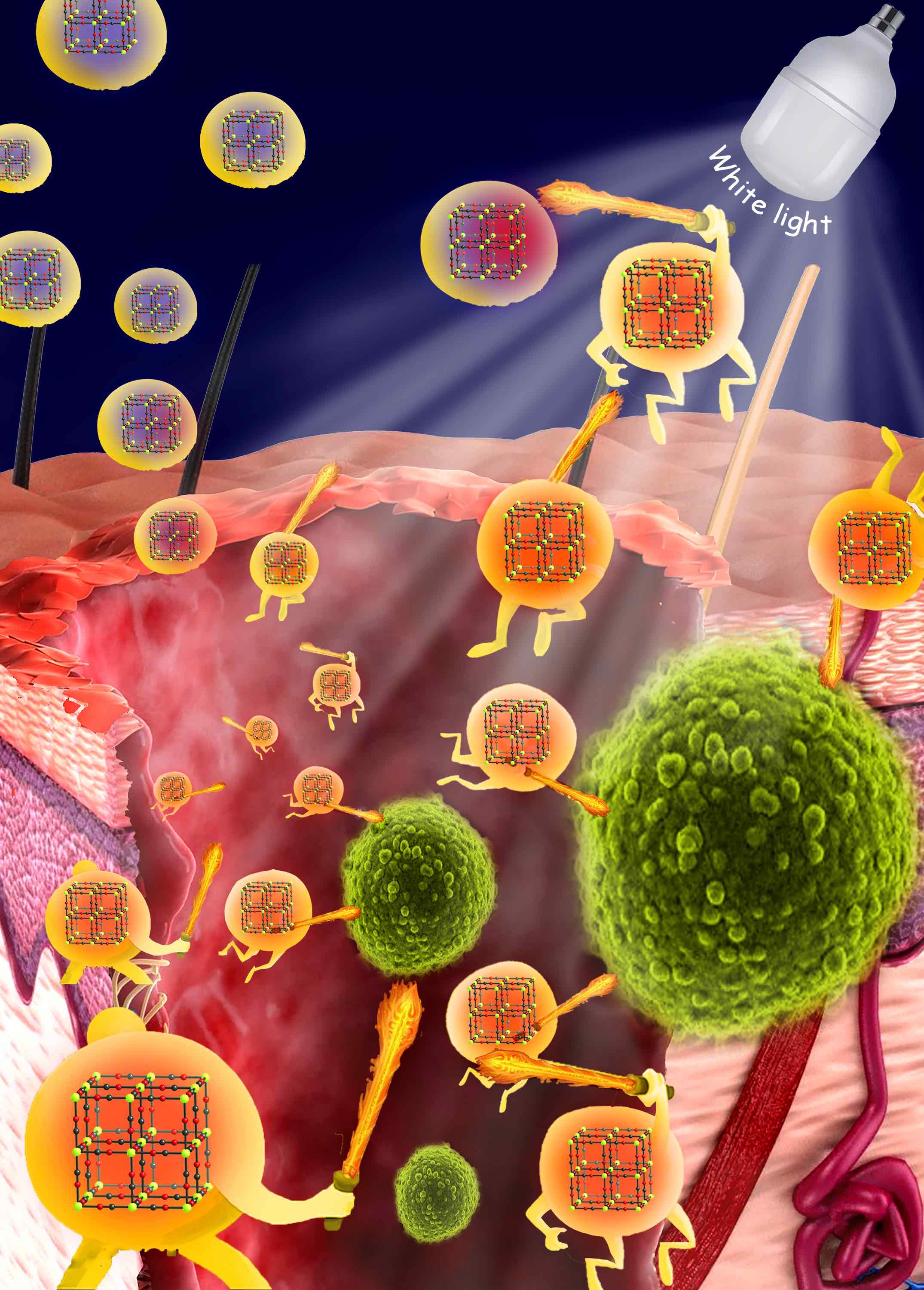Research: Tiny but Mighty: Nanoparticles Able to Fight Antibiotic-resistant Bacteria in Skin Wounds
 | By Retna Devi |
The human skin is often likened to a security guard, keeping harmful entities, big and microscopic, away from the body. However, this ability is compromised when the skin is wounded and bacteria such as Staphylococcus aureus and Pseudomonas aeruginosa infiltrate the body and work against the immune system.
With antibiotics becoming increasingly ineffective in treating such bacteria due to the emergence of drug-resistant microbial strains, scientists in LKCMedicine and India’s CSIR-Institute of Genomic and Integrative Biology (CSIR-IGIB) and the University of Delhi have developed a novel treatment modality that can eradicate the most stubborn bacteria in wounds. With nanotechnology, the team has created, for the first time, light-responsive nanophotonic particles (CHPB-FD) that become effective in killing bacteria when exposed to white light. These nanoparticles can be applied to infected wounds to improve healing, especially antibiotic resistant strains.

Depiction of nanophotonic particles responding to white light and eradicating bacterial growth. Image by Nayanika Chakraborty
During the study which took place from 2021 to 2023, the international team identified CHPB-FD particles’ unique abilities to act like enzymes, and produce heat and singlet oxygen, a harmful type of oxygen, when exposed to light. The local increase in temperature and the production of singlet oxygen is able to disrupt the internal metabolic processes of the bacteria and kill them without causing any harm to the rest of the body.
In addition to light-enhanced killing of bacterial cells during photodynamic therapy (PDT) and photothermal therapy (PTT), this treatment augments the activity of genes involved in tissue repair, promotes the deposition of collagen, and increases the healing of wounds.
The team detailed their research in a paper published in ACS Applied Materials & Interfaces in October 2023.

“This newly developed antibacterial agent is a game-changer because it can serve as a powerful wound healing tool that fights antibiotic-resistant bacteria without relying on broad-spectrum antibiotics. It also shows great promise in helping patients with diabetic foot ulcers which are often difficult to heal, and patients with MRSA wounds and bedsores that are difficult to eradicate,” said LKCMedicine Assistant Professor of Immunology and Cell Biology Navin Verma, a senior author in this study.
Apart from being an alternative treatment for wounds, this novel method can also potentially be applied to effectively disinfect biomedical equipment and surfaces in hospitals and other healthcare settings.

